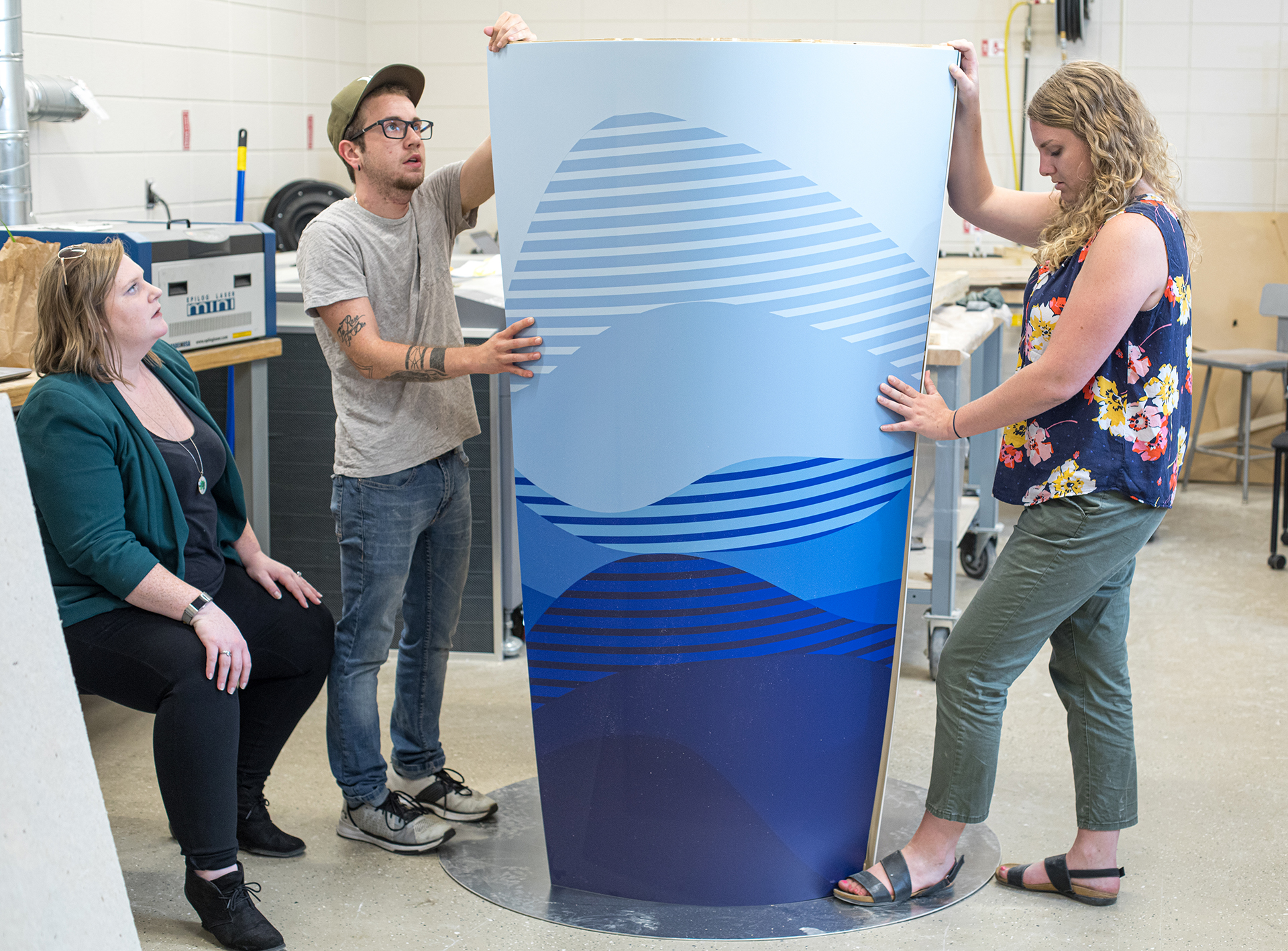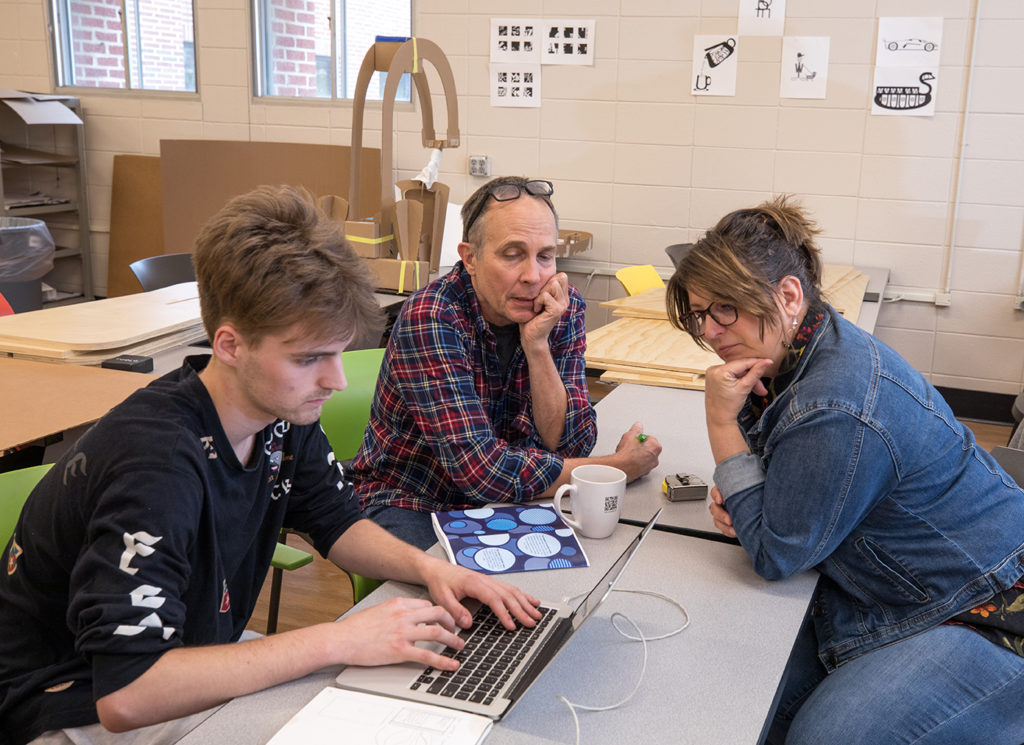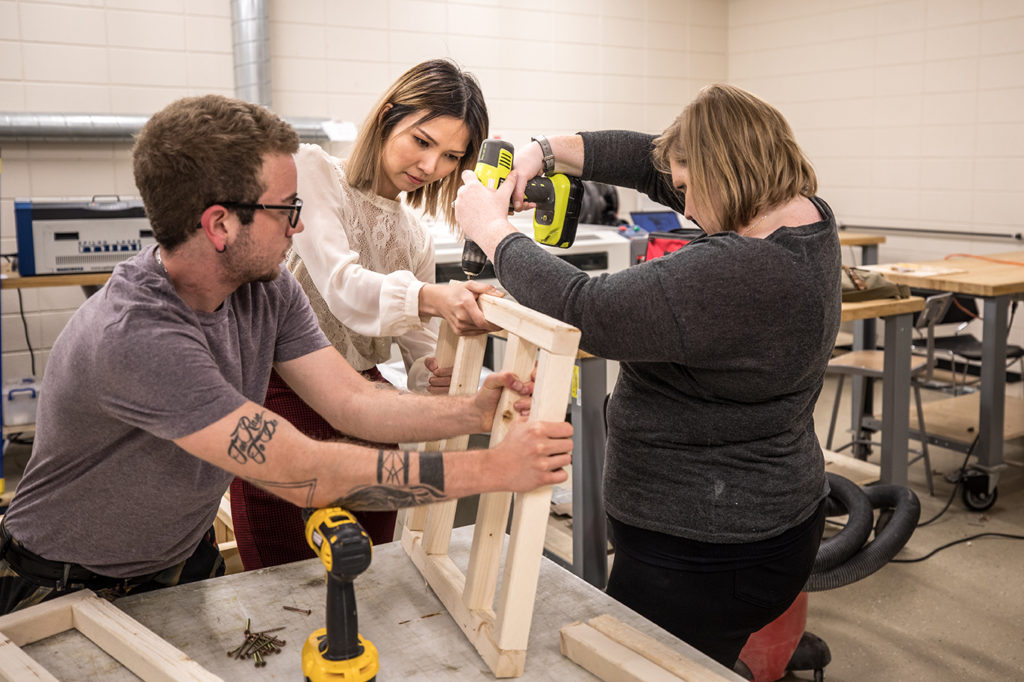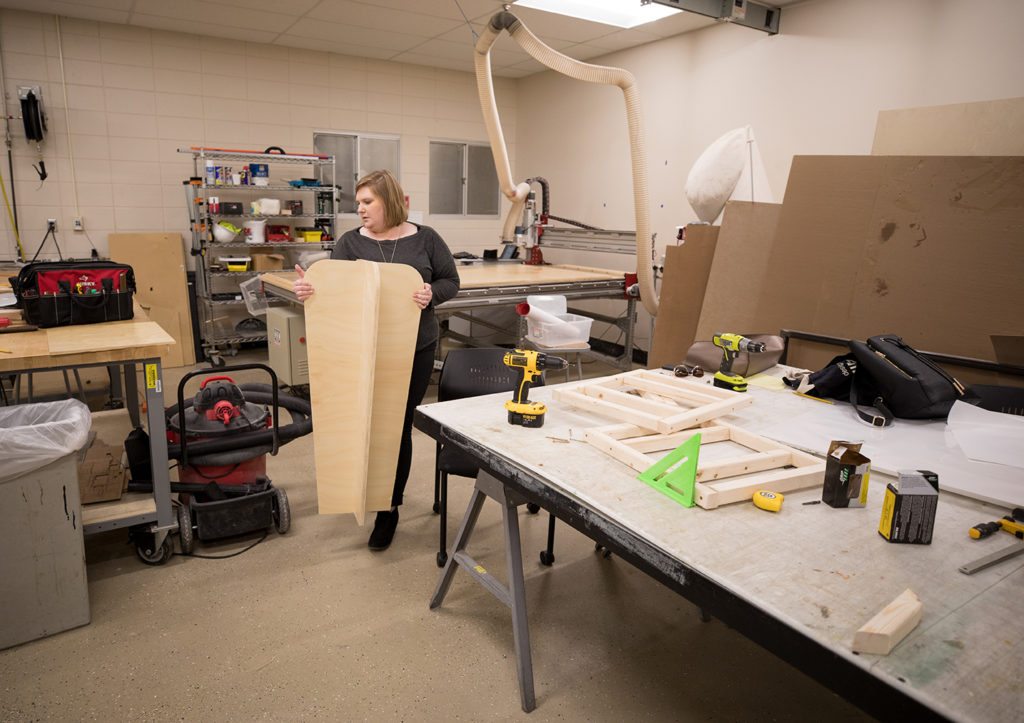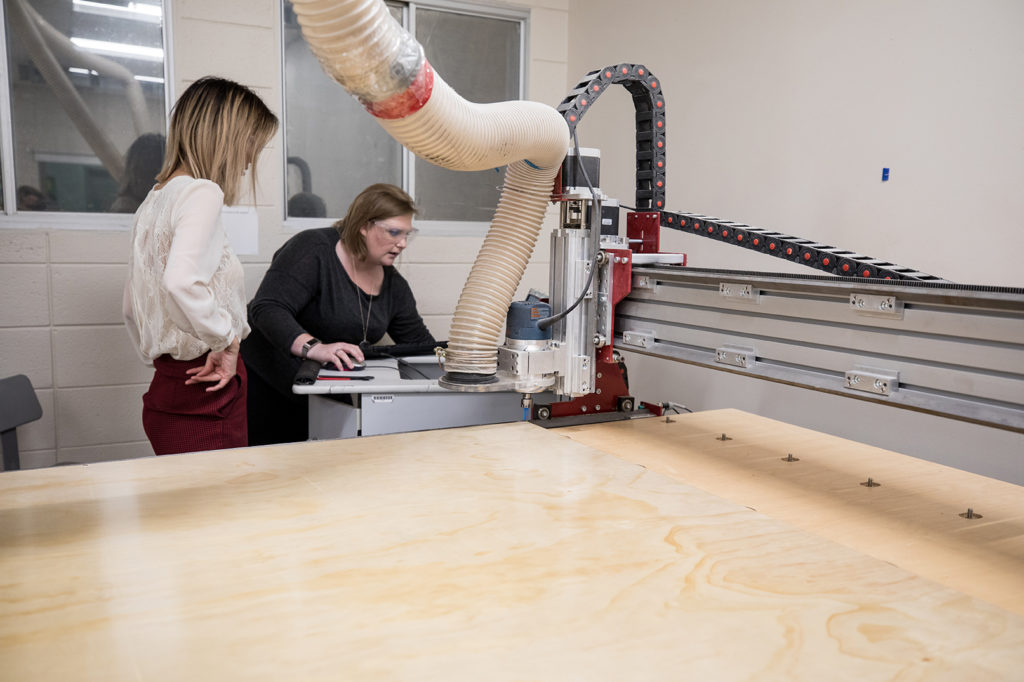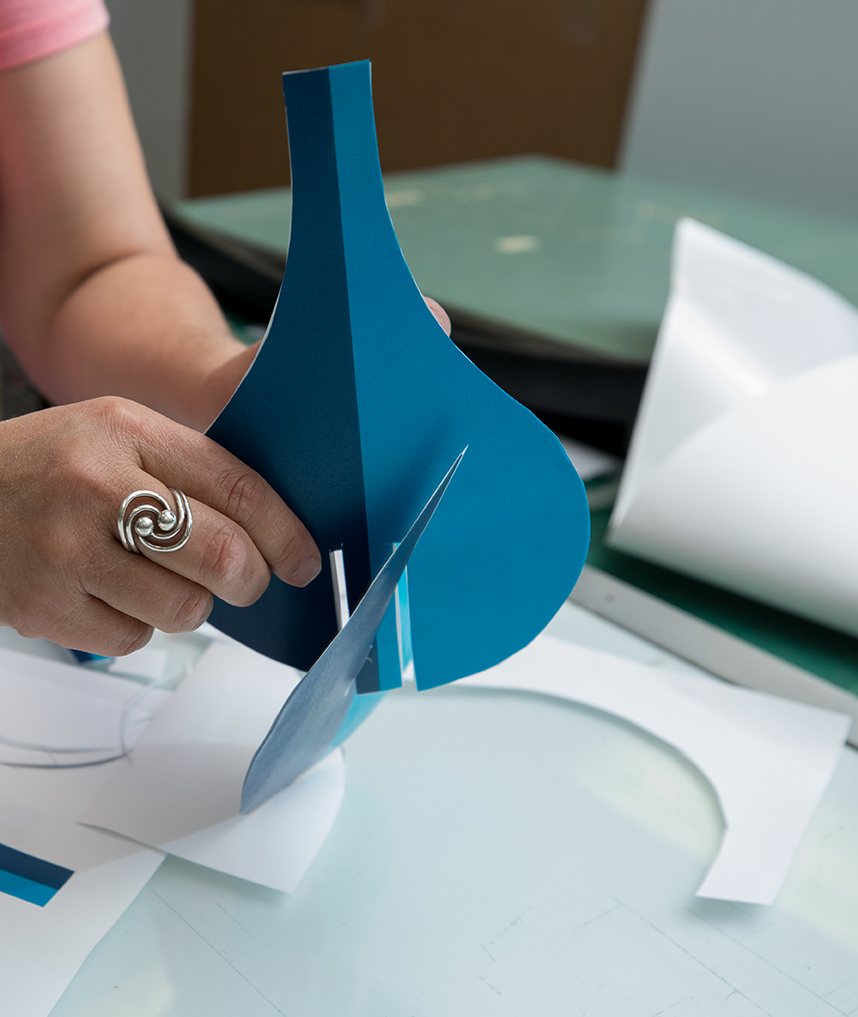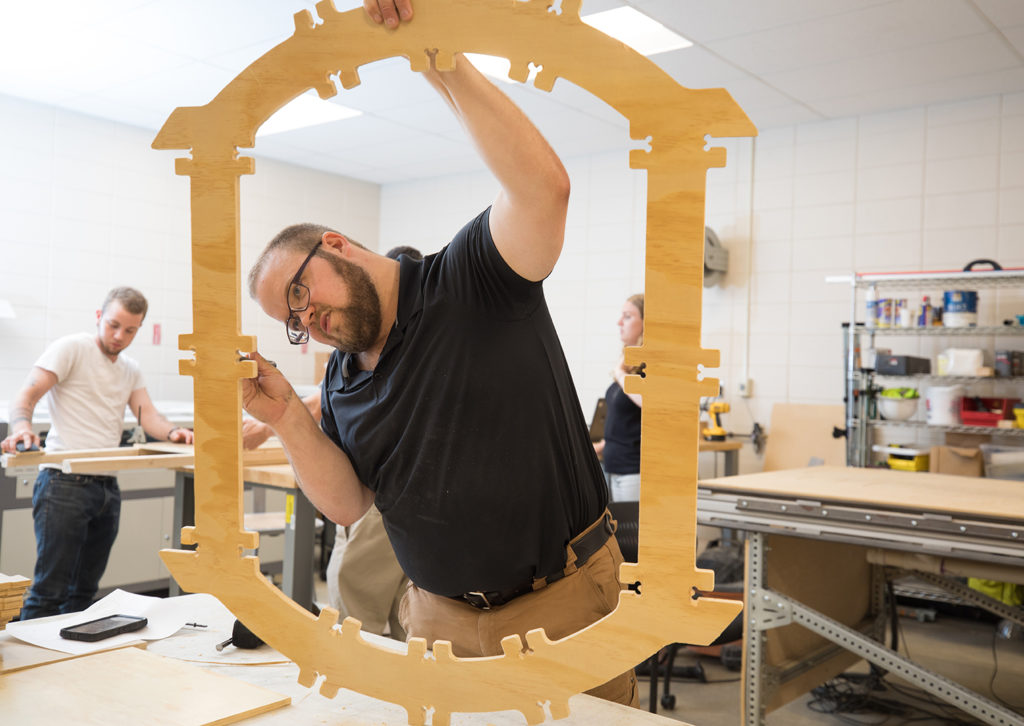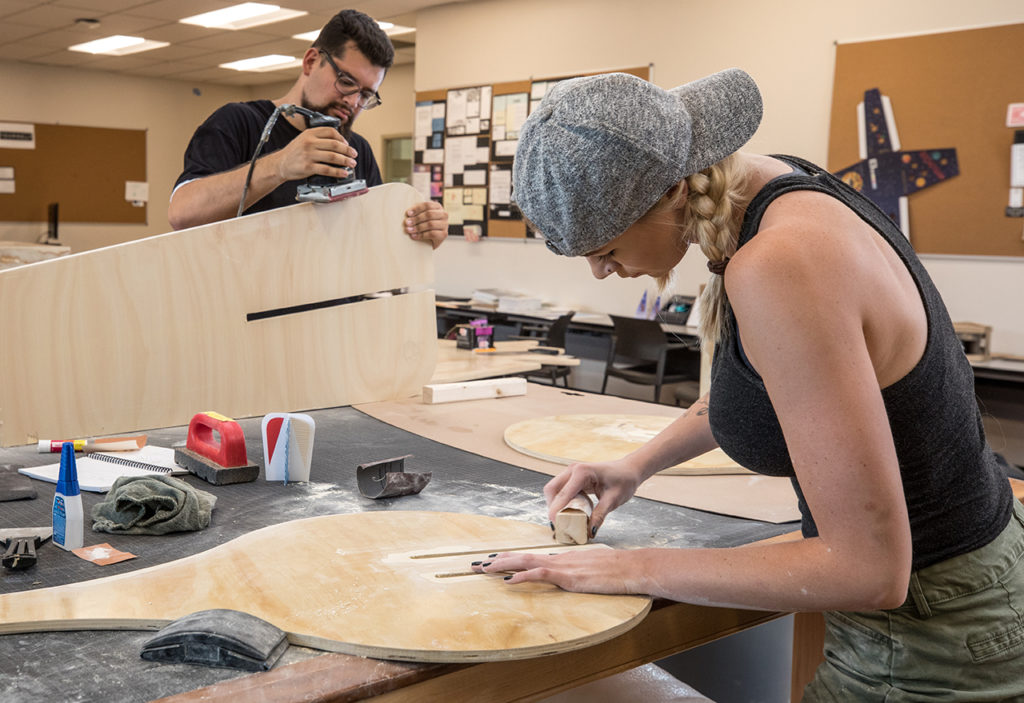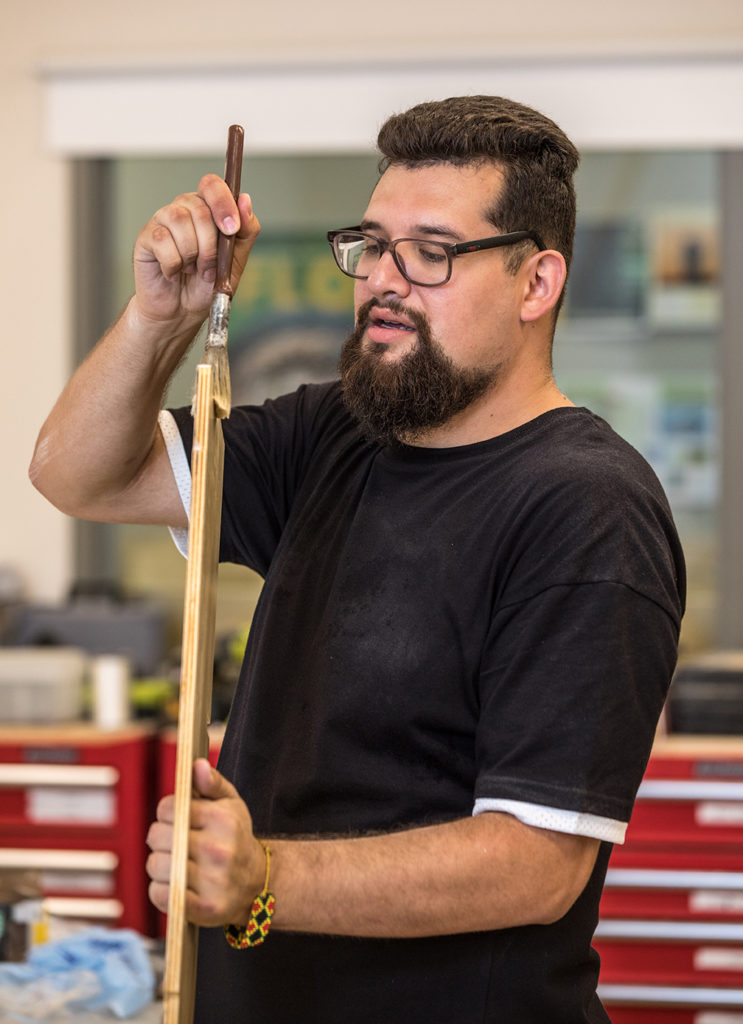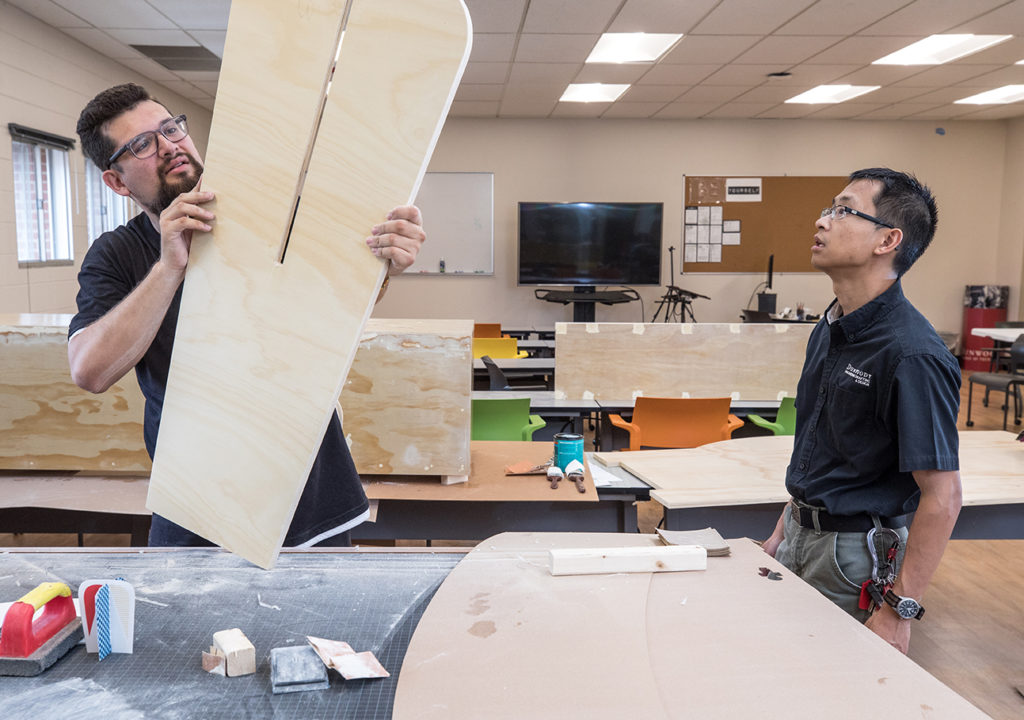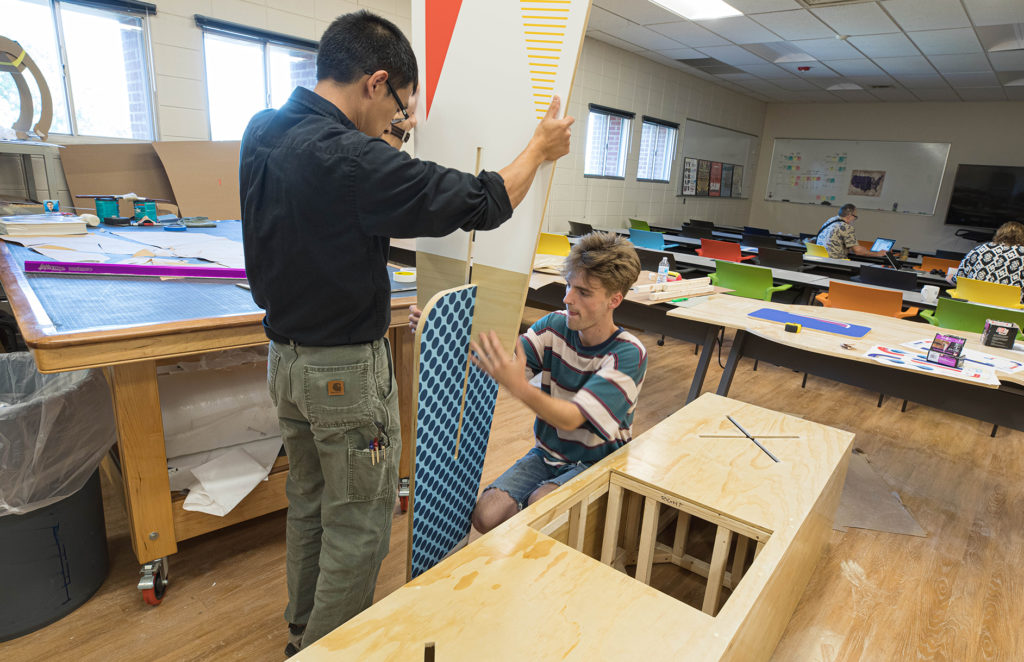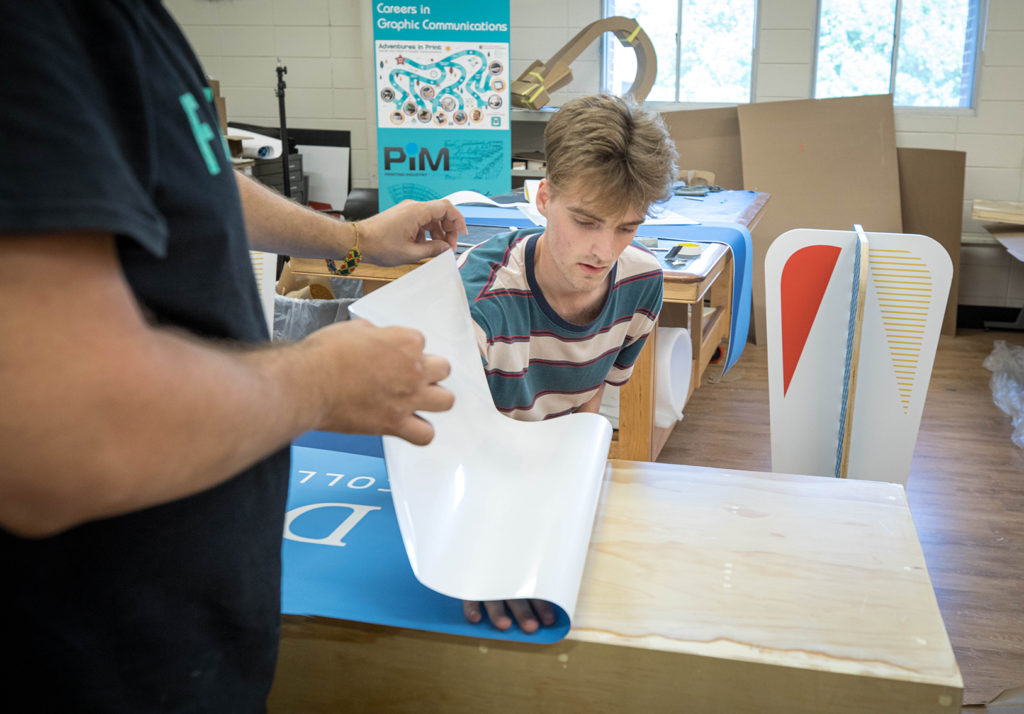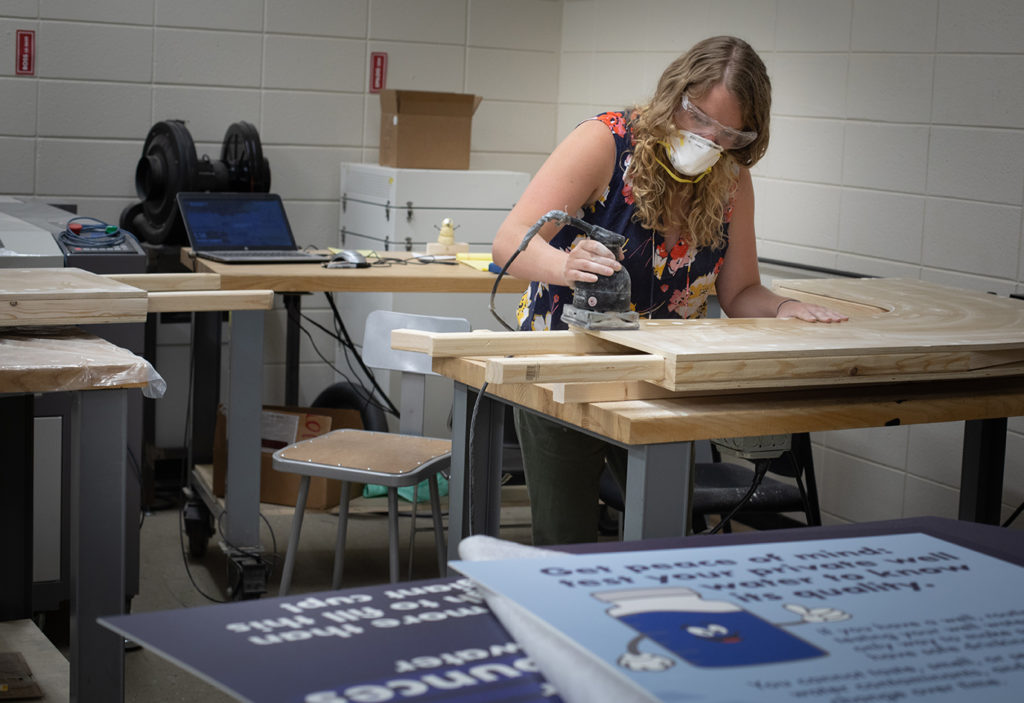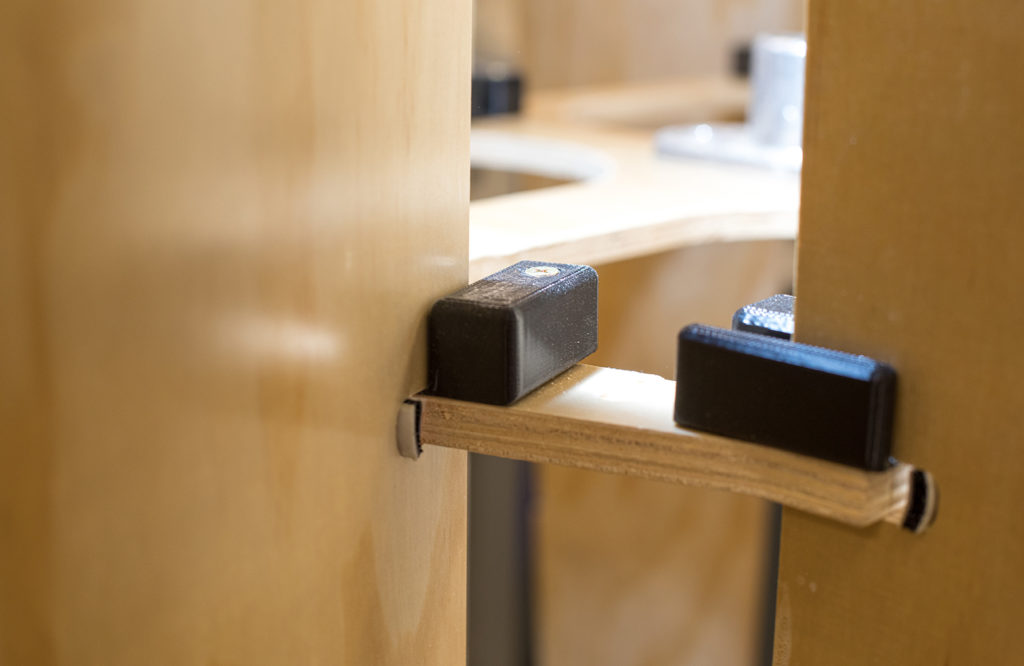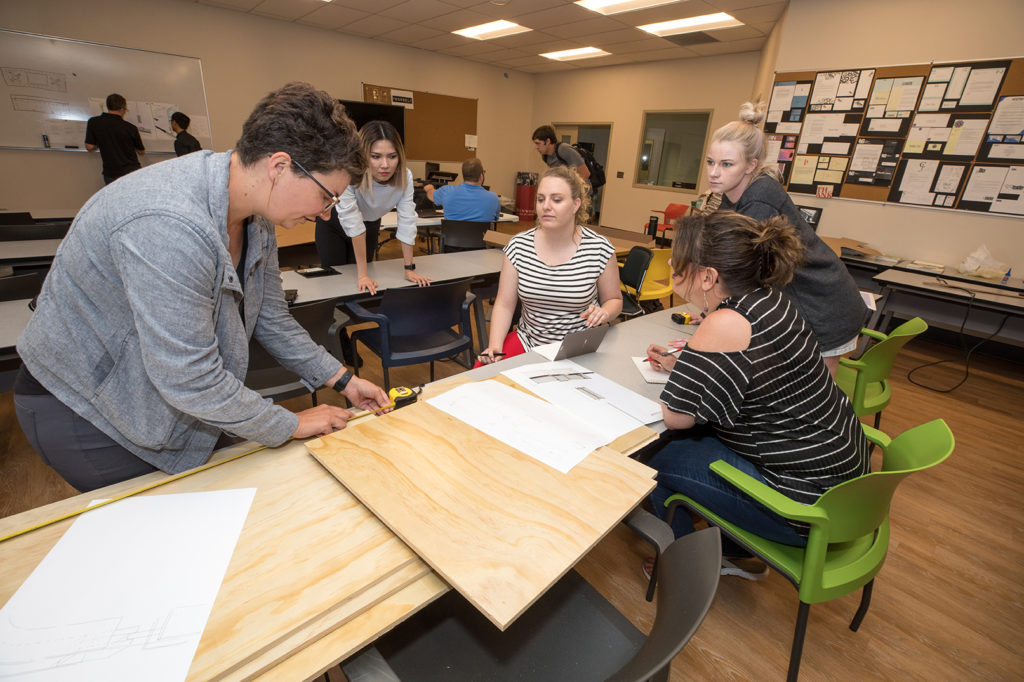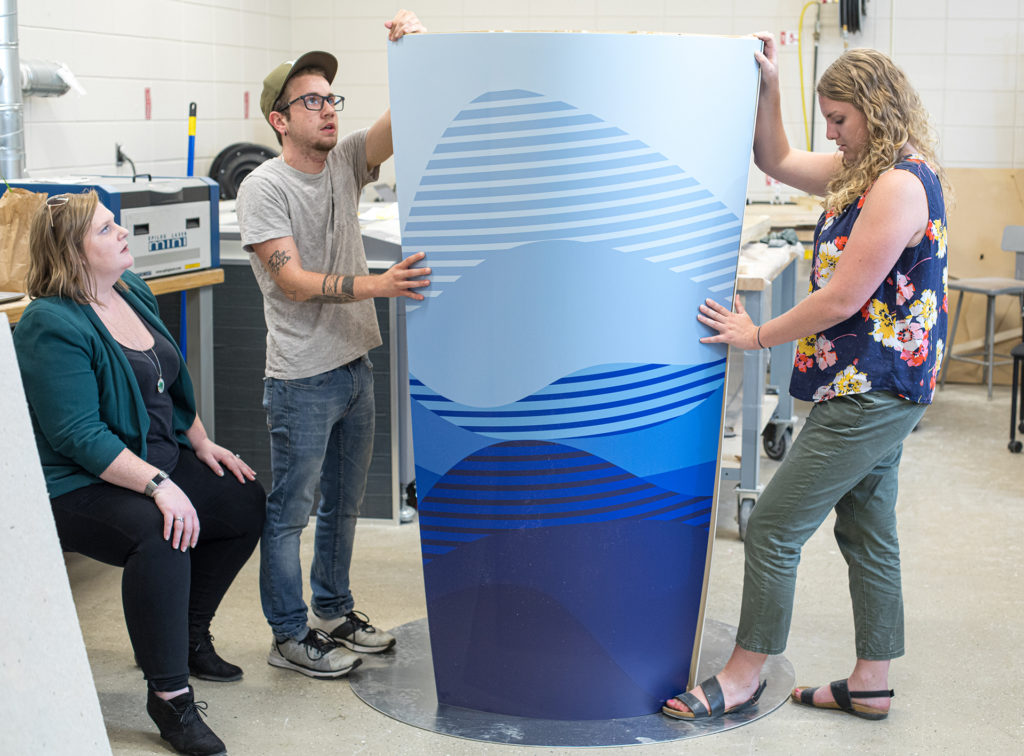
For the second consecutive year, Dunwoody College of Technology students have collaborated with the Minnesota Department of Health to create a display educating fairgoers about water consumption. The project will be on display at this year’s Minnesota State Fair, Aug. 22-Sept. 2.
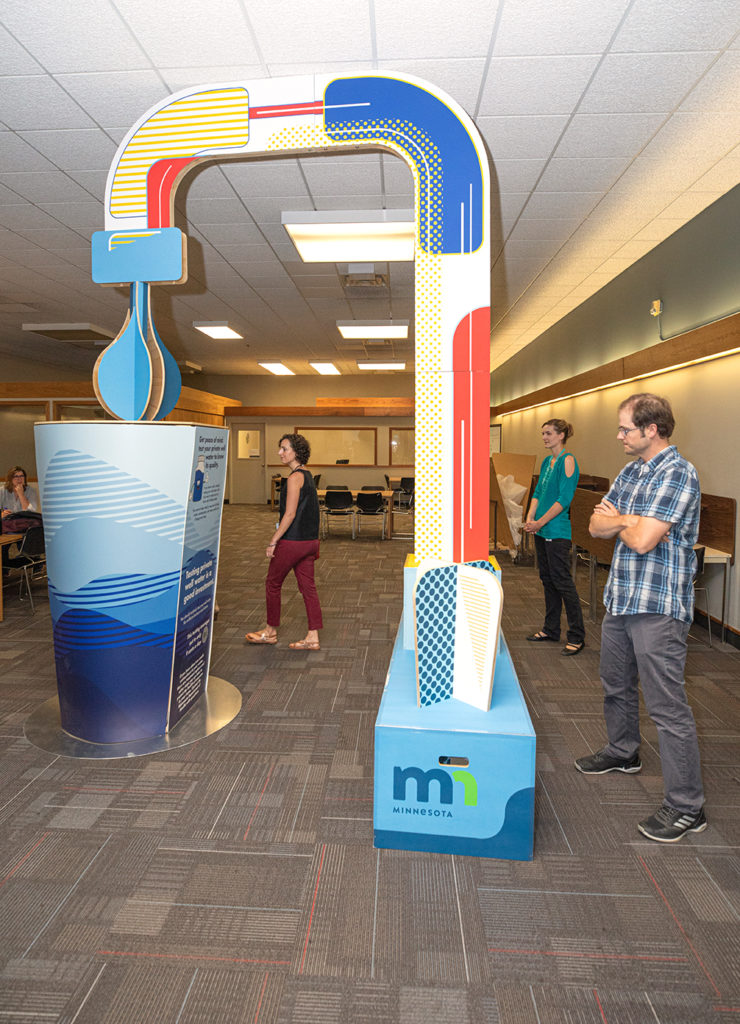
Throughout the summer, the sound of wood cut by Computer Numerical Control (CNC) machine, the buzz of sanding, and the whirr of drills reverberated through the hallways on the third level of Dunwoody – home to programs like Architecture, Interior Design, Construction, Electrical, and Graphic Design.
Gaining real world experience through hands-on projects is a pillar of the Dunwoody experience. Learning to working cross-departmentally adds another layer.
“Being a part of the Water Project has helped me learn skills such as effective professional communication across departments, time-management, problem-solving, and community involvement,” said Interior Design student Twee Andersen.
“Not everyone thinks the same. One must explain things differently and creatively to be able to get your idea across to the group and have them understand what you are trying to convey,” said Interior Design student Maddie Bickel. “We were all able to work together using our strengths from our majors to achieve the finished product.”
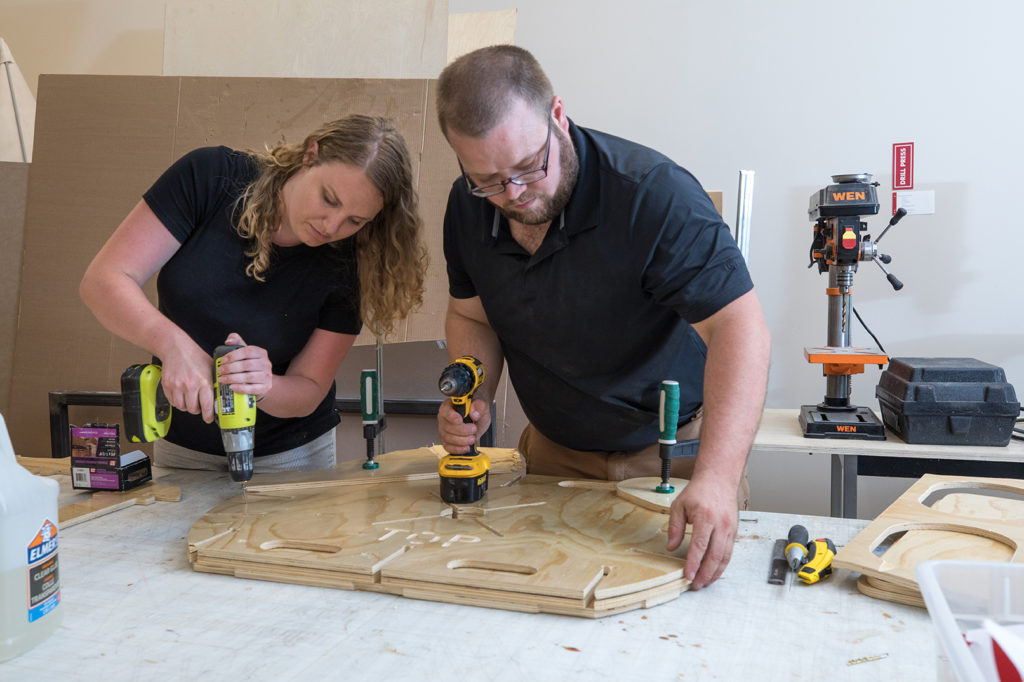
Last year’s theme educated fairgoers about where their water comes from. The message this year adds to that, stressing the importance of using tap water instead of bottled water.
“Making sure we were meeting the expectations the State set was incorporated into the design,” Bickel said.
Back in February, students traveled through heavy falling snow to Saint Paul to present conceptual designs to Minnesota Department of Health representatives. Each team was given the opportunity to sell their design to the State. The final collaboration incorporated portions of all ideas that took into consideration the client perspective.
“Working with Dunwoody students is great because they bring a range of creative ideas to the table and are fantastic at thinking outside of the box when approaching a design problem,” said Luke Pickman, Hydrologist at the Minnesota Department of Health.
That kind of process is something faculty members, such as Alex Wong, Assistant Professor of Engineering Drafting & Design, enjoys watching.
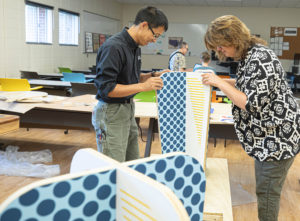
“There is a lot that goes into the project behind the scenes, and working extra hours to get it done,” Wong said. “We try to let the students’ work speak for itself, providing guidance and help when necessary, but trying to let the students take ownership of the project.
“The display itself is really a reflection on their work.”
The display – a faucet and cup – will loom large, standing 12 feet over fairgoers when assembled in the Eco Experience building. Its size even surprised those most involved in constructing it.
“I knew it was going to be big, but I didn’t know how big it was,” said Graphic Design student George Borja after they put it together the first time.
Devin Quast, a student in the Graphic Design program, said the team wanted “to make something more abstract that would be more interesting to see and take pictures of.” The entire faucet structure is wrapped with Lichtenstein-inspired pop art graphics.
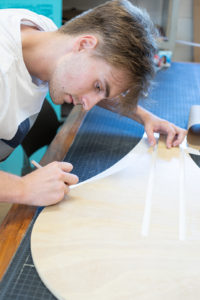
The display also needed to break down for easy transport.
“I learned many new concepts in the area of design,” said Jeremey Berg, ’18 Automated Systems & Robotics and current Industrial Engineering student.
“It reinforced my belief that a good designer is someone that is empathetic to the unknown person (the assembler in this case) that will have to utilize that design, and interact with it after the project has been completed.”
Berg designed and engineered the inner scaffolding of the cup – a plethora of slats connected to each other with 3D printed brackets. A metal pole runs through the center, attaching the cup and a water drop to the faucet above. Graphic panels surround the cup, rounded by another set of 3D designed and printed detachable forms. These all break down flat for transportation. The faucet also comes apart.
The process has given students skills they will be able to take forward into their careers.
“All the wood that was used for the display was cut out using the CNC,” Bickel said. “During the design we had to consider how the drill bit would cut the material, thickness of the material, and making sure we were precise in our measurements to prevent having hiccups down the road. This will be useful for the upcoming semester when I take a furniture and lighting design class.”
The students are looking forward to seeing their hard work on display at the Fair.
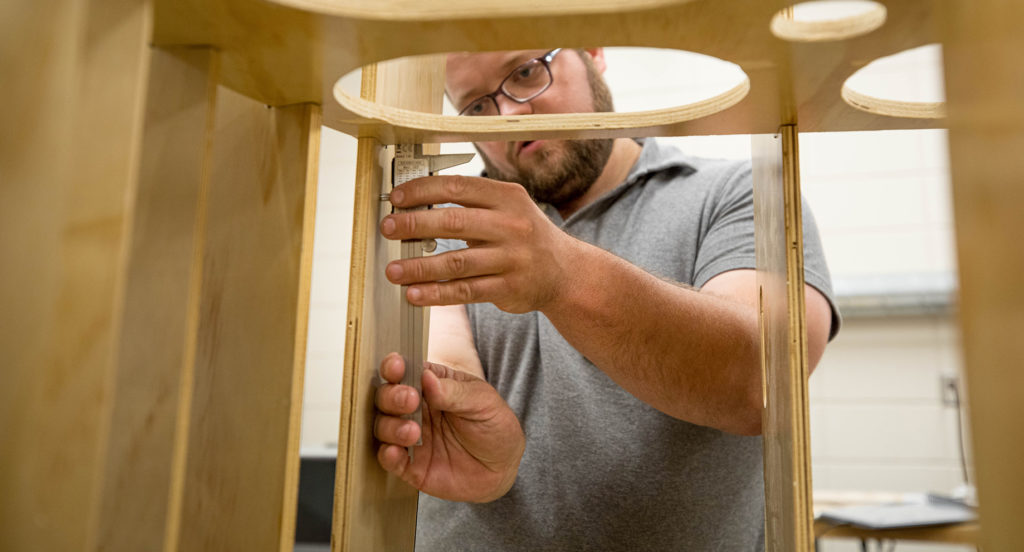
“No one walking by will actually see the majority of the work that I put into it as it will be covered by polystyrene sheet graphics,” Berg said. “But I will still be immensely proud to know that something that I helped to create is now being seen by tens of thousands of people.”
“It’s gratifying to see something I’ve helped construct with the team over several months in its final form for the general public to see,” Michele Stenzel, Pre-Media Technologies said.
“The most rewarding part of design? Seeing your vision come to life,” Andersen said.
